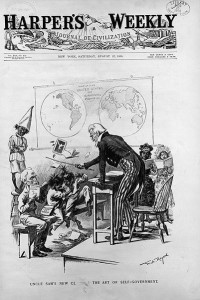 A new study from the Fordham Institute catalogs a school type I hadn’t heard about before: the Private Public School. These are basically public schools that service almost no poor students, and apparently 1.7 million U.S. students attend one of them.
A new study from the Fordham Institute catalogs a school type I hadn’t heard about before: the Private Public School. These are basically public schools that service almost no poor students, and apparently 1.7 million U.S. students attend one of them.
This includes a relatively high percentage of kids in the states around New York City: Connecticut is the highest with 18 percent of public school students going to these poverty-free idylls, while New Jersey has 17 percent. You can even search for the individual schools in question in this (.pdf) report.
New York City, despite its filthy reams of richness, has none of these Private Public Schools (the titans and barons and moguls keep their kids in private schools or in the suburbs, or, ideally, in both).
I wonder how many students around the country attend schools with virtually no rich students? I’d bet a much higher percentage, and I bet they’re also concentrated in places where the Private Public school phenomenon is strongest.
But here’s the thing: no doubt the thinkers behind the study wanted to draw attention to educational inequality and a lack of socioeconomic diversity in our schools. What they’ve actually created? A handy roadmap for White Flight. If you find yourself in uncomfortably close quarters with food-stampers, just find a school on this list and move nearby. After all, it’s good to be a rich student in 2010. Don’t get caught learning with the Lazzaroni.

Did New York Times report it the reverse, with NJ at top and CT right after? Regardless and only mildly related, I wonder if private publics is actually a great appellation for charter schools. As a CT native now living in NJ, I’d like to also add that growing up, CT was known as having the poorest cities in the wealthiest state–so you have urban/suburban income disparities, reflected in tax receipts, reflected in school budgets leading to some kind of nasty cycle that only something as weird as arts-led gentrification/’luxury condo’ marketing scheme or some other fluke (like progressive federal and state funding policies) might change.